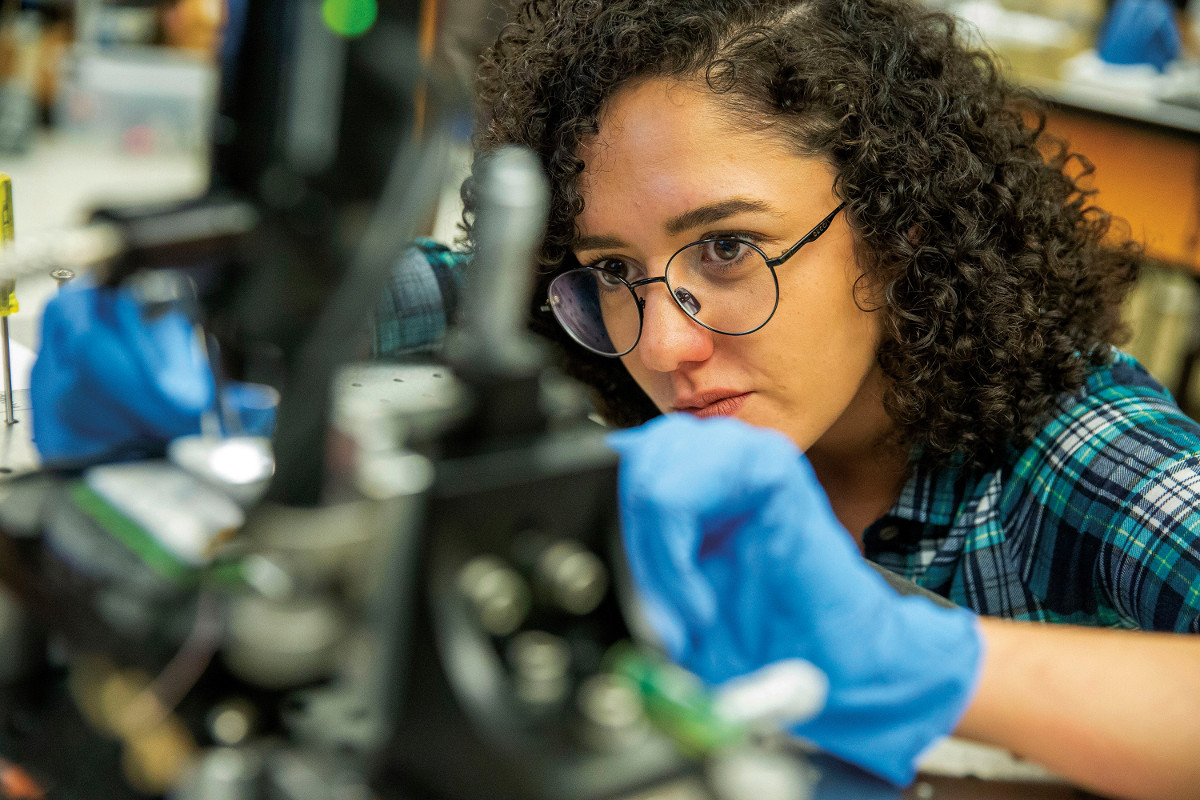
Staying on the Cutting Edge in Trying Times
Despite widespread belt-tightening in higher education, faculty members in the SF State College of Science & Engineering are finding innovative ways to ensure that their students have access to world-class research experiences that will create the scientists of tomorrow. Three recent grants, totaling more than $2 million, will allow more students to conduct research in futuristic fields like machine learning, cellular engineering and robotics.
“We’re working to actively push the boundaries of the scientific research that we can do here at SF State,” says Professor of Biology Diana Chu.
Chu led the work to obtain a new $750,000 grant from the National Science Foundation (NSF) to purchase a state-of-the art microscope that can capture clear images all the way down to the scale of individual cells, even tracking what’s going on inside them over time. The equipment will be used by more than 100 student researchers from biology to chemistry to physics each year, replacing a decade-old microscope. “We trained hundreds and hundreds of students with that [old] microscope,” Chu explained, but the rapid pace of technology in the field means it’s already on the brink of being outdated.
“We’re working to actively push the boundaries of the scientific research that we can do here at SF State.”
—Professor of Biology Diana Chu
Professor of Computer Engineering Hamid Mahmoodi was the lead on obtaining two other grants. One comes from a U.S. Department of Defense program aimed at increasing representation in science and engineering fields by supporting minority-serving institutions. The $600,000 in funding will let the University acquire a Swiss Army knife-worthy tool that can test electric circuits and measure and monitor a variety of electronic and digital signals, making it useful for everything from troubleshooting computer chips that are specialized to run futuristic machine-learning programs to testing the properties of super-thin materials. The other grant Mahmoodi led, a $750,000 NSF grant to obtain equipment that can test other types of electronic circuits, will be used for a number of areas of engineering, including cutting-edge work on robotics, prosthetics and wearable technologies.
Other grant awards for new research equipment are already paying off for students. Viviane Costa (pictured above), a master’s student in the Department of Physics and Astronomy who took second place in the CSU’s 2020 Student Research Competition in the category of graduate physics, will soon begin using tools obtained through an earlier NSF grant led by her advisor, Associate Professor of Physics and Astronomy AKM Newaz. The equipment will allow her to push her thesis research to new extremes, measuring the properties of super-thin materials under powerful magnetic fields and at temperatures just barely above absolute zero.
“Now we don’t have to go to Stanford, we don’t have to go to Berkeley,” Costa says. “It’s right here. It’s ours.”